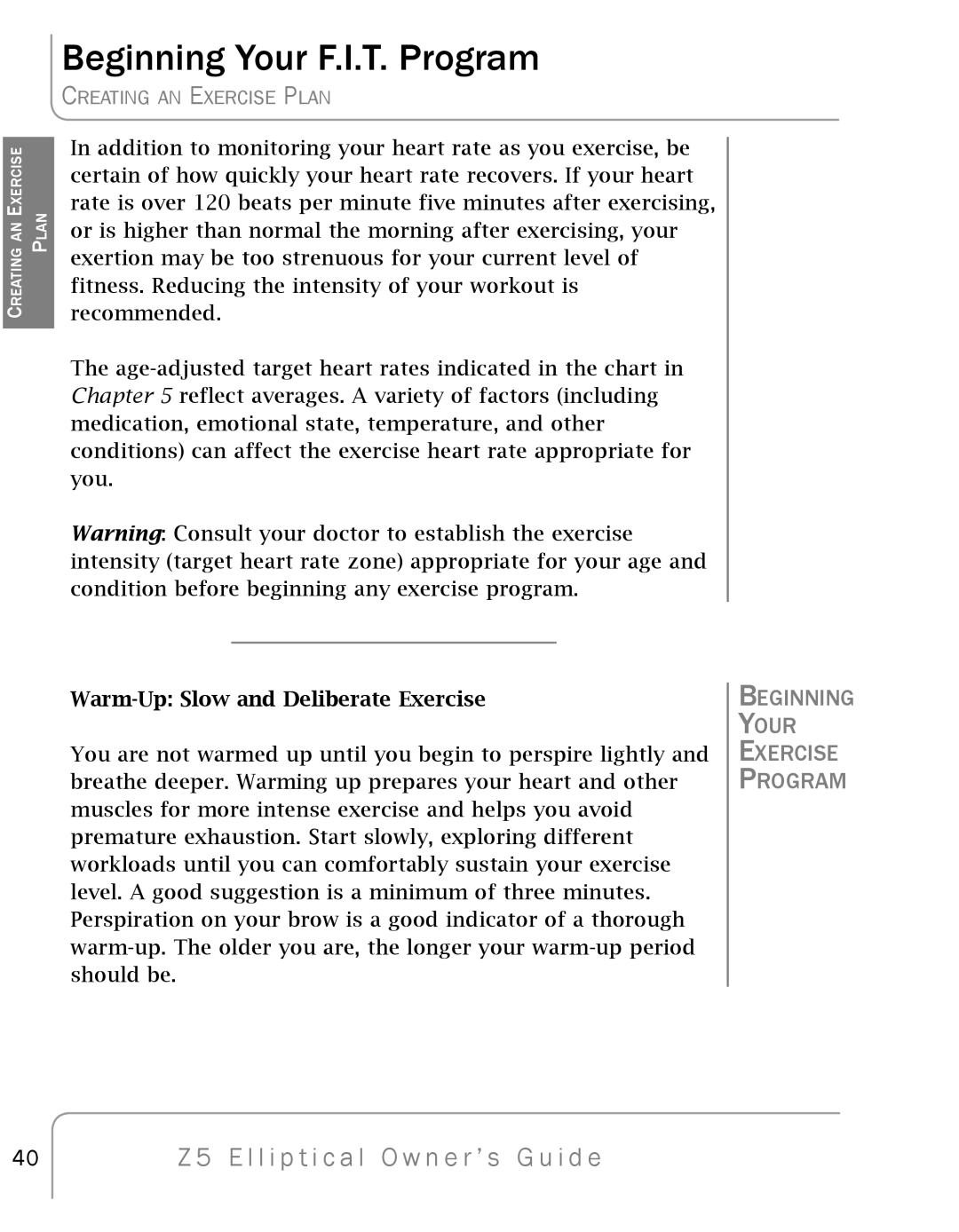
Beginning Your F.I.T. Program
CREATING AN EXERCISE PLAN
|
| In addition to monitoring your heart rate as you exercise, be | |
EXERCISEANREATING | PLAN | ||
certain of how quickly your heart rate recovers. If your heart | |||
|
| ||
|
| rate is over 120 beats per minute five minutes after exercising, | |
|
| or is higher than normal the morning after exercising, your | |
|
| exertion may be too strenuous for your current level of | |
|
| fitness. Reducing the intensity of your workout is | |
C |
| recommended. | |
|
| The | |
|
| ||
|
| Chapter 5 reflect averages. A variety of factors (including | |
|
| medication, emotional state, temperature, and other | |
|
| conditions) can affect the exercise heart rate appropriate for | |
|
| you. | |
|
| Warning: Consult your doctor to establish the exercise | |
|
| intensity (target heart rate zone) appropriate for your age and | |
|
| condition before beginning any exercise program. |
Warm-Up: Slow and Deliberate Exercise
You are not warmed up until you begin to perspire lightly and breathe deeper. Warming up prepares your heart and other muscles for more intense exercise and helps you avoid premature exhaustion. Start slowly, exploring different workloads until you can comfortably sustain your exercise level. A good suggestion is a minimum of three minutes. Perspiration on your brow is a good indicator of a thorough
BEGINNING
YOUR
EXERCISE
PROGRAM
40
Z 5 E l l i p t i c a l O w n e r ’ s G u i d e
